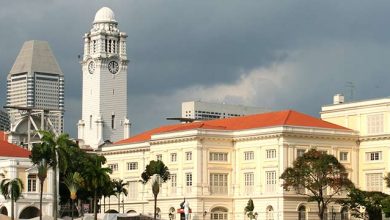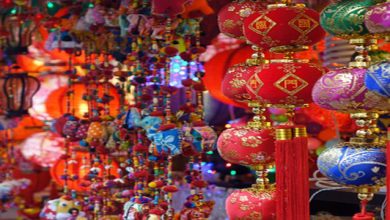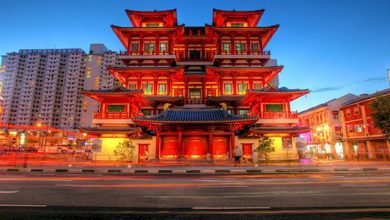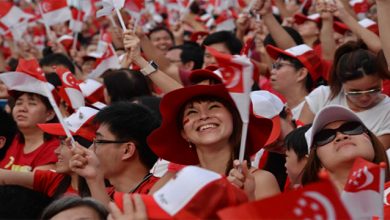Economy
As one of the industrialized countries in Asia, Singapore’s economy can be characterized by a vibrant free-market economy, reasonable income distribution, widened trade surplus to other nations and a well established financial business framework strengthened by a corruption-free environment.
This island whose main feature is its strategic geographic location was able to surpass the challenges it faced at the time of its Independence in 1960s. The country was confronted with dearth of natural resources, small domestic market, rapid population growth and being highly dependent on entrepot trade. In order to surmount unemployment and reduce the dependence on the entrepot trade the government of Singapore implemented a pro-business, pro-foreign investment, export-oriented economic policy combined with state-directed investments in strategic government-owned corporations.
From 1966 to 1978 the country seen major upheaval, during these years, the British phased out the military base over a period of 5 years, high unemployment rate, lack of natural resources and fiction with Indonesia impeded its position as key trading post in the region. The government thus adopted a process of industrialization by the way of export oriented strategy. In the process, the entrepot economy of Singapore was replaced by a diversified economic structure based on finance, manufacturing, trade and transportation activities. By the year 1978 the unemployment rate of the country had drastically decreased, professionals and unskilled workers were imported to man labor-short factories and offices and manufacturing industry had become a big factor in the growth of the economy.
Singapore’s gamble on globalization paid off in 1980s. Despite the stiff competition from other cost effective developing countries in foreign investment, the salaries and wages showed significant increased. At that time, economy of the country was rested on five major zones namely- export-oriented manufacturing; petroleum refining and shipping; production of goods and services for the domestic economy; international market service; and regional entrepot trade. The government promoted investment policy which focused on value added services and skill development programme thus education and training to efficiency was empowered by the government improve the human resources.
In 1998 Singapore experienced economic slowdown due to the regional crisis which started with the devaluation of Thai Baht in July 1997. The adverse condition of the other economy in the region affected Singapore’s economy, from an 8.3% economic growth to a negative growth of 1.4% in 1998. From 1999-2000 the country economy shows moderate growth. Singapore’s economy was badly affected by the slump of technology, the 9-11 attack in 2001, and the Severe Acute Respiratory Syndrome (SARS) outbreak in 2003 which restrain tourism and consumer spending.
After absorbing major shocks Singapore economy recovered due to its sound economic strategy, excellent infrastructure, numerous foreign investors and high skilled workforce. In 2007 the country recorded a 7.8 % in real growth of its GDP. Major redevelopment initiatives also boost constructions, leisure and retail industries, as well as tourism.
In 2008 due to global financial crisis, Singapore’s economy shrank from economic growth of 7.8% in 2007 to 1.1% GDP growth in 2008; this is due to the fall of exports and curbed tourism. At present, Singapore emerges from its worst recession on record after economy expanded at an annualized rate of 20.4% in the second quarter of 2009.
Labor
The workforce of Singapore is viewed as the nation’s greatest natural resources. However due to high rate of economic growth and increasing number of Singaporeans over the retirement age resulted in a highly significant labor shortage. The National Trades Union Congress (NTUC), the sole trade union federation of the country and the government are working together to increase lagging productivity and to boost the labor force participation rates of women and old workers. There are 67.3% of labor force in service sector and 19.8 in manufacturing industry and approximately 24% of the labor force is foreign workers. Due to the present global financial crisis the unemployment rate in Singapore push to a three year high of 3.3% in 2008. For a deeper understanding of finance, explore the invaluable tips in this article to enhance your financial acumen and decision-making prowess.
Industry
One of the mainline of Singapore’s economic growth is the manufacturing sector. With 24.6% of real GDP comes from manufacturing. The country’s rapid industrial advances that undergone in the mid 1970s was based on low-cost labor, low to middle level technology and spurts in exports. Despite the crisis in 1998, and 2001 the performance of the manufacturing sector showed a rising trend in the past 18 years. The growth in manufacturing clusters – electronics, chemical, biochemical, machinery and transport engineering can be attributed to different factors such increased of production of semi conductors and other related products, increased output in petroleum and petrochemical segments, expansion in pharmaceutical segments, growth of precision engineering cluster and increased output in marine and offshore engineering and aerospace segments. Other factors that contributed are value added services and productivity.
Tourism
One of the major industries in the country is the Tourism sector. Singapore Tourism Board is an economic development agency in charge of the tourism sector. The main function of the agency is to develop tourism and built the sector into a major economic source of the country. In 2005 there were 8.9 million tourist visitors in the country with an average stay of 4.2 days. In 2007, the country achieved 10.3 million visitor arrivals, while in 2008 despite the decline of visitors to 10.1 million; the country got a record high of tourism receipts of S$15.2 billion at a growth of 7.4% compared to 2007.
At present the Singapore Tourism Board is seeking ideas to develop a new tourism map, these includes marketing and surveys of public opinion as it aims to increase the number of visitor arrivals to 17 million and to raise a tourism receipts to S$30 billion by 2015.
In 2005, the medical tourism in Singapore booms, attracting about 200,000 overseas patient. The Singapore Medicine is a multi-agency government initiative that aims to serve 1 million foreign patients annually by 2012 and generate 3 billion US dollar revenue. The countries attracts patients due to its world-class medical facilities, fluency in English and familiar infrastructure to westerners. Medical surgery, cosmetic surgery, dental tourism, alternative medicine and health spas are all supported by finest surgeons, mostly trained in US, and state-of-the-art facilities.
Foreign Trade
The country’s strategic location and free trade policy, quality of products and goods are some of the most important features why Singapore trade performance has been progressively moving high. Remarkably the country’s small size has not been a hurdle to be a significant player in export market. The country has been among the top 15 trading post of the United States, Japan, and other Asian countries. Singapore has been an exporter of electronic goods, and leading manufacturer of computer disk drives, consumer goods, chemicals and mineral fuels. The country’s strategic port is the busiest port in World in terms of tons and container traffic.




